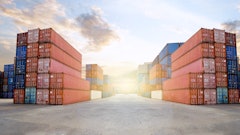Due to the rapid growth of Canadian and Mexican shipping ports on the West Coast, and competition on the East Coast expected to increase with the expansion of the Panama Canal, officials from the Port of Los Angeles revealed last Thursday at the Board of Harbor Commissioners meeting a newly outlined set of business strategies they said would be needed to ensure the port retains and expands its role as a global shipping hub.
The port is going to try and grow container business by 3 percent annually, try and increase export business with a goal of converting 75 businesses that can export goods by 2017, and also increase cargo support revenues and rentals such as trucking, warehouses, rail, tugs and barges by 10 percent.
“This has been a long time in the making,” said David Mathewson, director of planning and economic development, about the strategy outline presented to commissioners.
“We need to become the most efficient port in the United States,” said Commissioner David Arian. “Six or seven years ago, (the target goal) was to become the cleanest. But now it’s efficiency, that’s what’s going to make the difference.”
The Port of Los Angeles leads ports worldwide in container volumes because of its proximity to Asia, a large local market for shipped goods, available warehouses, a chain of distribution centers and a strong labor pool. The existing skilled labor workforce in the ports of Los Angeles and Long Beach handles more than 40 percent of the nation’s inbound containerized trade, according to the report.
In an article in the LA Daily News?, Arian said Mexico ports still pose the greatest challenge.
“If they get their stuff together, they’re going to be our main competition, not the Panama Canal,” said Arian.
To read more, click HERE.



























